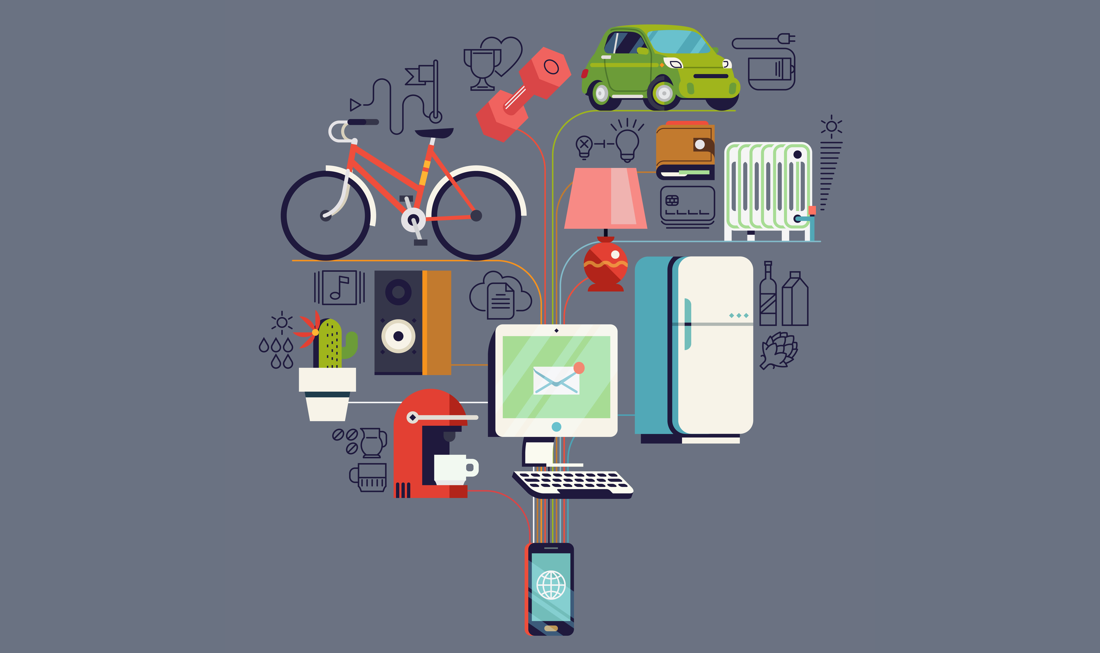Science fiction author Arthur C. Clarke's famous quote about the relationship between technology and magic---"Any sufficiently advanced technology is indistinguishable from magic"---has proven to be a remarkably prescient commentary on the state of technology and its impact on people for over 50 years now.
The problem today is that people have become too accustomed to the magic, and it's getting harder and harder to develop new "tricks." Most consumer's expectations for what technology can do have become so high, that they're starting to look for and demand things that technology should do.
One critical technology capability that hasn't been realized yet is pain-free interconnections between multiple devices, networks, and services. Sure, there have been great improvements in physical connectivity solutions like USB3 and Thunderbolt 3, along with important improvements in wireless networks like 802.11ac, Bluetooth LE, and Zigbee. We've even seen some important steps forward in interconnect protocols, such as AllJoyn, OIC, and Threads---though there certainly are plenty of challenges (and standards battles) to be solved and resolved there.
Even with those developments, however, the process of making multiple devices in a home (or work environment) seamlessly work together is far from magical. Frankly, it's often maddening. Configuration challenges, set-up hassles, software installation snafus, networking problems, and more often turn what should be an exciting new experience---firing up a new device or service for the first time---into painful drudgery.
As the number of devices and services that people own and regularly use continues to grow, the problem is just getting worse. Even if you can get a peripheral to work with one device, for example, making it work the way it's supposed to across multiple devices, is far from guaranteed. Similarly, accessing a new service or application from one device might be straightforward, but making it work with several of your devices can be a nightmare.
What we really need is a capability that automatically discovers all the relevant devices in your home (or work environment) and automatically, or "automagically", not only connects to them, but enables their full capabilities. In other words, not only do the devices become seamlessly and reliably connected---valuable in itself---but any necessary configuration to make it do what it's supposed to do happens as well---the real prize.
What we really need is a capability that automatically discovers all the relevant devices in your home and 'automagically' not only connects to them, but enables their full capabilities.
Technically, this autodiscovery capability is sometimes called enumeration, but even to today's jaded consumers, it's bound to feel like magic. Typical (and even relatively technical) consumers and business users have suffered far too long with having to manually configure and enable each device's capabilities, and as a result, haven't really been able to appreciate all that their devices could offer. In fact, autodiscovery might give many consumers a new-found appreciation for many of their existing devices and/or services as it could finally enable them to use these devices or services to their fullest extent.
Though it might seem like we should have had these capabilities for a while now, it turns out that to do this accurately and do it well is very challenging. Thankfully, numerous vendors, including Intel and Microsoft among others, are working hard to enable these capabilities. Leveraging a combination of new hardware and software functionality, they're starting to make this magical dream a reality.
As we move into the world of connected homes, connected cars and other smart things, the ability to not only connect but fully leverage the intelligence they offer is going to be essential. It's simply too much to expect average users, whether in consumer or commercial environments, to be able to configure all these devices, let alone fully take advantage of the potential they offer. Plus, many of the most important benefits that new devices and services are going to offer will be dependent on their ability to connect to other devices---essentially, a network effect.
That's where the "magic" of technology needs to step in and ensure that the real value of all these new devices doesn't get lost in the set-up shuffle. Without these kinds of autodiscovery improvements, many of the kind of innovations these new devices and services hope to offer could end up being for naught.
Bob O'Donnell is the founder and chief analyst of TECHnalysis Research, LLC a technology consulting and market research firm. You can follow him on Twitter @bobodtech. This article was originally published on Tech.pinions.
